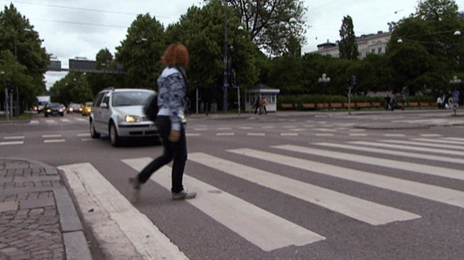Fast Company is the latest media outlet to trumpet the decline of driving, with a look at the phenomenon dubbed "peak car use."

In an article titled "We Are Approaching Peak Car Use," the magazine examines an Australian study [PDF] which found driving rates are falling in a number of cities in Europe, North America and Australia.
Explanations include rising fuel prices, the increasing appeal of urbanism, and another interesting theory: that many urban areas have reached the limit people are willing to drive as part of their daily commute (about one hour).
The study authors conclude that traffic engineers need to change their models and rethink the assumption that traffic will increase annually.
Meanwhile, new data from the Bureau of Transportation Statistics adds to the body of research about the decline in driving -- but whether that amounts to "peak car use" is worth further consideration. The report shows a leveling off in vehicle miles traveled, beginning at the end of 2007.
Between 1980 and 2007, urban vehicle miles traveled increased 133 percent, or almost five percent annually. But from 2007 to 2009, urban driving held steady. The change in driving in rural areas was more impressive. Rural vehicle miles traveled declined four percent from 2007 to 2009 after increasing at an average rate of two percent annually between 1980 and 2007.
These numbers don't point to a cause. But the decline in driving aligns pretty well with the greatest period of economic contraction in a generation. And driving declines have long been linked to recessions. Which leaves us wondering: Is the decline part of a lasting trend, or does it just reflect a cyclical pattern tied to the economy?
High unemployment is often cited as an explanation for decreases in driving. For example, when traffic fatalities declined nine percent last year, the Baltimore Sun called it the "recession's silver lining."
"The silver lining in any recession is a dip - and sometimes a significant dip - in highway deaths," Russ Rader, spokesman for the Insurance Institute for Highway Safety, told the paper.
And driving isn't the only mode of transportation to diminish. Many transit agencies have seen a decline in ridership in recent years, even as gas prices climbed. High unemployment rates were widely blamed. LA's MTA reported a three percent decrease from 2009 to 2011.
“Probably the biggest impact on our ridership right now is the economy,” Marc Littman, a spokesman for Metro, told the LA Times in April. “Until that improves, you probably won’t see an uptick in ridership.”
To the extent that declines in driving are tied to economic turmoil, they might be expected to reverse themselves just as quickly under different circumstances. But it's difficult to isolate the economic factor from other theories about driving decreases.
An interesting case is that of the Pacific Northwest, where, arguably more than anywhere, transportation officials have taken measures to encourage transit, biking, and walking over driving. Traffic data has shown vehicle miles traveled in this region peaked in the early 2000s, prior to the recession. This is even more significant when you account for population growth in that region over the same period.
On the other hand, in more car-centric metros like St. Louis, transportation data has shown car use continuing to increase. Thanks to its sprawling freeway system, the St. Louis region added 36 hours per year to the average annual commuting time between 1999 and 2009.
Ultimately, only time will tell whether national declines are the result of peak car use or cyclical fluctuations. But some new research points to a promising trend. A report released by the Center for Clean Air Policy this spring indicated that beginning in 1996, US GDP began growing at a faster rate than VMT. That could mean that at the end of this recession -- especially given its extremely disruptive nature -- a different pattern will emerge, where the economy grows without an accompanying rise in traffic.





